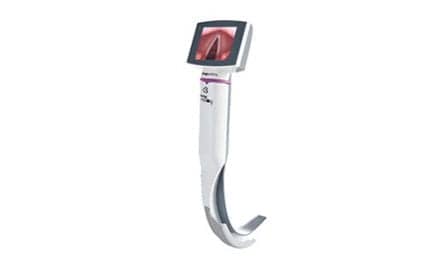Rapid and accurate interpretation of ABG results are necessary in order to make correct and informed decisions on managing the patient’s pulmonary status and managing metabolic abnormalities.
Bill Pruitt, MBA, RRT, CPFT, AE-C, FAARC
Arterial blood gases (ABGs) are common, essential measurements for patients with pulmonary or metabolic conditions. The results provide a snapshot of how well oxygenation and ventilation is being handled by the patient (if breathing spontaneously) or show the results of medical interventions (i.e. oxygen therapy, CPAP, Bi-level PAP, mechanical ventilation, etc). In addition, ABGs gives information on the acid-base status of the patient. Rapid and accurate interpretation of ABG results are necessary in order to make correct and informed decisions on managing the patient’s pulmonary status and managing metabolic abnormalities. This article will provide some tips and pointers on interpreting ABGs.
The foundation to interpreting the ABG findings is knowing what the normal ranges are and what is called “absolute” normal values. The concept of an absolute normal value is similar to what is referred to for body temperature. The normal range for adults is 97 ͦ F to 99 ͦ F with an absolute normal of 98.6 ͦ F. Here are the ranges and values that provide the basis for interpretation:
| Measured item | Normal range | Absolute normal |
| pH | 7.35-7.45 | 7.40 |
| paO2 | 80-100 mm Hg | >80 mm Hg |
| PaCO2 | 35-45 mm Hg | 40 mm Hg |
| HCO3– | 22-26 mEq/L | 24 mEq/L |
An example of an “absolutely” normal ABG would be pH 7.40, PaO2 90 mm Hg, PaCO2 40 mm Hg, and HCO3– 24 mEq/L (all of the parameters are within normal limits). When thinking about ABGs to decide on the acid-base status, keep these things in mind.
- pH is the value that defines an acidosis or alkalosis. pH is the negative expression of the logarithmic measure of hydrogen ion (H+) concentration in the blood. If the pH is low (<7.40) we may have an acidosis (increased H+) and if high (>7.40) we may have an alkalosis (decreased H+). The ratio between carbon dioxide and bicarbonate (HCO3-) gives the basis for the regulation of pH. This is based on the chemical formula that shows the relationship between PaCO2 and the production of hydrogen ions (H+), and the Henderson Hasselbalch equation.1 (See Figure 1.)
- Carbon dioxide acts like an acid (see Figure 1) and is regulated by the lungs through increased or decreased ventilation. An increase in PaCO2 (a result of decreased ventilation) will bring about a more acidic state (respiratory acidosis). A low PaCO2 (a result of increased ventilation) will bring about a more alkalotic state (respiratory alkalosis).
- Bicarbonate acts like a base or an alkaline substance and is regulated by the kidneys through retaining or removing bicarbonate in the urine. An increase in HCO3– (a result of increased bicarbonate retention) will bring about a more alkalotic state (metabolic alkalosis) and a low HCO3– (a result of decreased bicarbonate retention or increased removal) will bring about a more acidic state (metabolic acidosis).
- PaCO2 changes very quickly (over minutes of time) based on the patient’s ventilation. On the other hand, bicarbonate (HCO3-) changes slowly over many hours, based on the kidney retention or removal of HCO3-.
The lungs and the kidneys are the two major organs that can alter these values. The body will work to correct the acute changes from respiratory or metabolic issues and try to regain a normal state (a normal pH). For example, if the carbon dioxide level increases (reflected in a low pH and increased PaCO2) due to periods of prolonged obstructive sleep apnea (OSA), this triggers a response to increase ventilation to bring the PaCO2 back down into normal range. A patient with a diabetic ketoacidosis (DKA) will have a low pH (acidosis state) and a low HCO3-. The body’s response will be to increase PaCO2 by increased ventilation to drop the carbon dioxide level in the blood and try to bring the pH back up to normal.
Chronic conditions bring about changes that relate to the primary cause (lung diseases change the PaCO2 while kidney disease or other metabolic conditions change the HCO3-). The body will work to compensate by altering the other component. For example, COPD patients have reduced alveolar ventilation, which causes CO2 to be retained. The primary cause is a respiratory issue, and compensation occurs with the kidneys. As stated earlier, CO2 acts like an acid and increases will drop the pH (the ABG will have a high PaCO2 and a reduced pH, described as respiratory acidosis or chronic respiratory failure). In the face of a higher PaCO2 the kidneys will respond by retaining more HCO3-. This increase will help offset the acidosis and the pH will move back toward a more normal value. Compensation will not bring the pH back to the absolute normal (7.40) but when the ABG is fully compensated, the pH will be back in the low side of the normal range (7.35 to 7.39). Chronic hyperventilation by the patient or over-ventilation with a mechanical ventilator reduces PaCO2 (respiratory alkalosis and a high pH). Over time the kidneys will remove more HCO3– to work to bring pH down.
A similar change occurs in chronic kidney disease (CKD) but the primary cause is metabolic and the compensation occurs with the lungs. Many patients with CKD will have a low HCO3– due to the disruption of normal kidney function which causes a low pH – described as a metabolic acidosis.2,3 In this case, the body responds by increasing ventilation to “blow off” CO2. This compensation will help move the pH back toward a more normal value (but it will not return to the absolute normal as discussed above). Here is an example of an ABG for a patient with moderate to severe CKD: pH 7.38, PaO2 98 mm Hg, PaCO2 31 mm Hg, and HCO3– 20 mEq/L. This ABG can be labeled a compensated metabolic acidosis or a metabolic acidosis with respiratory alkalosis.
A useful way to perform ABG analysis for acid-base status is by going step-by-step through the results.
Step One
Examine the pH, PaCO2, and HCO3-. If all three are within their normal ranges, this is a normal ABG (do not go any further). If any of these three are outside their normal ranges go to the next step.
Step Two
Look at the pH. If it is <7.40 it is an acidosis. If it is > 7.40 it is an alkalosis. (The pH may be in or outside the normal range).
Step Three
Look at the relationship between the pH and the other two. If the pH and PaCO2 have moved in opposite directions the issue is a respiratory disorder (either a respiratory alkalosis or respiratory acidosis – depending on what was found in Step 2). The exception to this is when there is a combined metabolic and respiratory disorder.
With a pH showing an acidosis plus both a high PaCO2 and a low HCO3-: This condition is labeled a combined respiratory and metabolic acidosis.
If the pH is showing an alkalosis with both a low PaCO2 and a high HCO3– . This condition is labeled a combined respiratory and metabolic alkalosis.
Step Four
Look at the pH, PaCO2, and HCO3– and their relationship to the respective normal ranges.
Respiratory Disorders as the Primary Cause
- In a respiratory acidosis, if the HCO3– is high outside the normal range and the pH is not within the normal range the ABG is labeled a partially compensated respiratory acidosis. The compensation of retaining HCO3– has not moved the HCO3– high enough to bring the pH up to its normal range (the kidneys are still working on the problem).
- In a respiratory acidosis, if the HCO3– is high outside the normal range and the pH is within the normal range the ABG is labeled a compensated respiratory acidosis. The compensating result from a high HCO3– is enough to bring the pH up to its normal range.
- For a respiratory alkalosis (a high pH and a low PaCO2 ), if the HCO3– is low outside the normal range but the pH is not within the normal range the ABG is labeled a partially compensated respiratory alkalosis. The compensation of the low HCO3– has not moved low enough to bring the pH back down to its normal range.
- In a respiratory alkalosis, if the HCO3– is low and outside the normal range and the pH is within the normal range the ABG is labeled a compensated respiratory alkalosis. The compensation of the low HCO3– has moved low enough to bring the pH back down to its normal range.
Metabolic Disorders as the Primary Cause
- In a metabolic acidosis (low pH and low HCO3-), if the PaCO2 is low outside the normal range but the pH is not within the normal range the ABG is labeled a partially compensated metabolic acidosis. The compensation of the low PaCO2 has not moved low enough to bring the pH up to its normal range (the lungs are still working on the problem).
- In a metabolic acidosis, if the PaCO2 is low outside the normal range and the pH is within the normal range the ABG is labeled a compensated metabolic acidosis. The compensation of the low PaCO2 has moved low enough to bring the pH up to its normal range.
- In a metabolic alkalosis, if the PaCO2 is high outside the normal range but the pH is not within the normal range the ABG is labeled a partially compensated metabolic alkalosis. The compensation of the high PaCO2 has not moved high enough to bring the pH back down to its normal range.
- In a metabolic alkalosis, if the PaCO2 is high outside the normal range and the pH is within the normal range the ABG is labeled a compensated metabolic alkalosis. The compensation of the high PaCO2 has moved high enough to bring the pH back down to its normal range.
Step Five
The last step (and easiest to perform) is to assess oxygenation. The ABG provides two ways to look at this – the PaO2 and SaO2. PaO2 measures the oxygen that is dissolved in the blood. SaO2 measures that level of saturation in hemoglobin (Hb), which is the primary means of transporting the oxygen from the lungs to the tissues. Normal PaO2 is 80-100 mm Hg and normal saturation is anything > 90%. A low level of oxygen in the blood (hypoxemia) occurs when either of these drops below the normal range. One other factor that should be included when evaluating the SaO2 is the amount of hemoglobin in the blood. The normal range for males is 13.5 to 17.5 grams per deciliter (g/dL) and for females the range is around 12.0 to 15.5g/dL.4 A Hb low indicates anemia and when Hb is very decreased the actual amount of oxygen being transported will drop even if the saturation (SaO2) is still normal. This situation will cause tissue hypoxia even though hypoxemia is not present.
Besides problems with lung or kidney disease, another factor that will alter ABG results is altitude. Patients moving to high altitude will be exposed to a lower barometric pressure, which can effect oxygenation. Examples of this would be flying at high altitude or going up into the mountains. The percentage of oxygen remains the same at high altitudes as it is at sea level (about 21% of the air is oxygen) but barometric pressure drops and the result is a lower PaO2 (barometric pressure is the driving pressure for oxygen to move across the alveolar/capillary membrane). Commercial aircraft often fly at around 30,000 feet above sea level and U.S. FAA regulations say that the aircraft cabin must be pressurized to an equivalent altitude of not more than 8,000 feet. The PaO2 at 8,000 feet is 60 mm Hg in healthy adults as a result of the decreased barometric pressure.5 People who climb to the top of Mt Everest are at about 29,000 feet elevation and their PaO2 will drop to around 40 mm Hg.5 Breckenridge CO ski slopes are at 9,600 ft. elevation and the estimated PaO2 at this altitude is around 70 mm Hg.
Conclusion
ABGs are valuable in evaluating a patient’s condition. Analyzing ABGs to decipher possible problems is a process that involves understanding the relationships between several factors and recognizing when the body is working to compensate for an abnormal condition. The best way to become skilled at interpreting an ABG is to practice the process. It takes time and practice to gain the skill. There are several internet websites that can provide ABG examples to interpret and help a novice learn how to quickly assess ABG results. Some suggested sites are listed below. Knowing how to analyze an ABG is a key component for respiratory therapists to help care for patients.
RT
Bill Pruitt, MBA, RRT, CPFT, AE-C, FAARC, is a writer, lecturer, and consultant and recently retired from over 20 years teaching at the University of South Alabama in Cardiorespiratory Care. He also volunteers at the Pulmonary Clinic at Victory Health Partners in Mobile, AL. For more information, contact [email protected].
Resources for ABG interpretation
- https://abg.ninja/
- https://nurseslabs.com/arterial-blood-gas-abgs-nclex-quiz/
- https://www.proprofs.com/quiz-school/story.php?title=arterial-blood-gas-quiz
- http://survivenursing.com/abg/
- https://quizlet.com/71308346/sample-problems-arterial-blood-gases-flash-cards/
- For more advanced problems: http://www.fammed.usouthal.edu/Pulmonology/Self-StudyAids/ABGs/ABGCaseQuestions&Answers.pdf
References
- From Washington State University General Chemistry Lab Tutorials . Accessed 3/10/21. http://www.chemistry.wustl.edu/~edudev/LabTutorials/CourseTutorials/bb/Buffer/Buffer.htm
- Ghatak I, Dhat V, Tilak MA, Roy I. Analysis of arterial blood gas report in chronic kidney diseases–comparison between bedside and multistep systematic method. Journal of clinical and diagnostic research: JCDR. 2016 Aug;10(8):BC01.
- From the National Kidney Foundation website on metabolic acidosis (accessed March 8,2021): https://www.kidney.org/atoz/content/metabolic-acidosis
- From Mayo Clinic website on “Hemoglobin Test”. https://www.mayoclinic.org/tests-procedures/hemoglobin-test/about/pac-20385075. Accessed 3/25/2021.
- Humphreys S, Deyermond R, Bali I, Stevenson M, Fee JP. The effect of high altitude commercial air travel on oxygen saturation. Anaesthesia. 2005 May;60(5):458-60.










